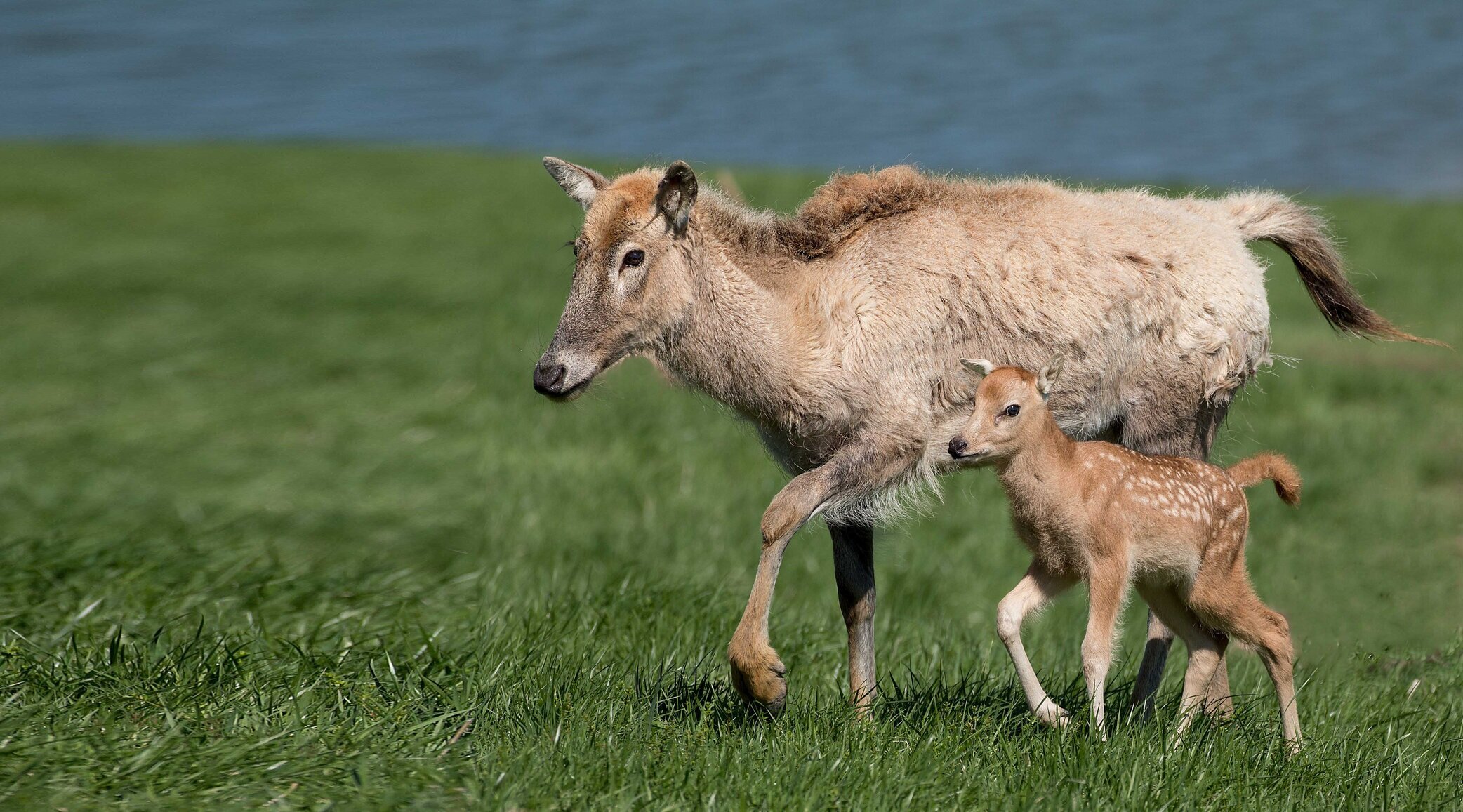
The Incredible Recovery Story of the Milu
HOW A CHANCE ENCOUNTER AND LONG-TERM COMMITMENT TO CONSERVATION SAVED THE MILU
More than a million milu, or Père David’s deer, once roamed the marshes and plains of eastern China. The species was however brought to the brink of extinction in the early 1990s due to hunting, urbanization, habitat destruction and conflict issues.
By the late 19th century, only one herd of milu remained. It belonged to the Tongzhi Emperor of China and was kept within the walls of the Nanhaizi Imperial Hunting Park in Nan Haizi. The species remained unknown to Europeans until 1865 when Père Armand David, a French zoologist and Catholic priest, travelled to China and visited the Imperial Hunting Park. There, he saw the milu and recognized it as a new species to Western science. He eventually, through a series of gifts and “negotiations”, exported animals for display in European zoos. His actions would ultimately save the species from extinction.
The milu is described as having the tail of a donkey, the head of a horse, the hooves of a cow and the antlers of a deer. (B. Miller)
During rut, males adorn their antlers with mud and vegetation. (B. Miller)
Milu have webbed toes, which makes them excellent swimmers. (B. Miller)
Early conservation efforts
In 1896, the 11th Duke of Bedford and then President of the Zoological Society of London, learning that the few milu in European zoos weren’t faring well, acquired 18 animals and relocated them at the Woburn Abbey in England, effectively creating an ex situ assurance population. This effort to conserve the species was timely since the last Chinese herd of milu was to be lost to poaching, natural disasters and war within a few years. The deer bred at the Woburn Abbey and the herd grew. It survived World War I, though barely, and reached approximately 255 individuals by the time World War II broke out. Fearing the herd would once again be destroyed by war, the 12th Duke of Bedford transferred animals to several zoos in England and abroad.
Reintroduction
Milu were first reintroduced to China in 1985 when the 14th Duke of Bedford sent animals from the Woburn Abbey herd back to the former Imperial Hunting Park (now the Beijing Milu Ecological Research Center in the Nanhaizi Milu Park). The Beijing Milu Ecological Research Center supports the establishment of self-sustaining milu populations in China through the establishment of an ex situ conservation program and wetland protection and restoration programs; conducts wildlife conservation research; disseminates wildlife conservation knowledge; and promotes ecotourism.
A second reintroduction occurred in 1987 when animals selected from five UK zoos were introduced into the Dafeng Milu National Nature Reserve in eastern China.
Soon after, it was concluded that an area on the north shore of the Yangtze River, close to Shishou City, would be the most appropriate site for milu reintroduction, and animals were translocated from the Nanhaizi Milu Park to the newly created Shishou Milu Nature Reserve. In 1998, when the reserve flooded and a number of milu escaped, the first free-roaming milu population since its extinction in the wild was established. Over the years, milu born at the Nanhaizi Milu Park have been repeatedly released to various nature reserves and the wild and helped establish 40 distinct herds across China.
The milu was assessed by IUCN as critically endangered in the wild in 1996 and listed as extinct in the wild in 2008. Today, approximately 700 milu roam free in China and their global population is estimated at more than 6000 animals. Yet, despite its ability to bounce back from near extinction, the milu remains vulnerable, and continued efforts are needed to maintain its recovery.
Legend
According to a Chinese legend, a horse, a donkey, a cow and a deer concerned with the heinous actions of the reigning king decided to help overthrow the Shang dynasty. They transformed themselves into one creature that possessed the speed of the horse, the strength of the cow, the donkey's sense of direction and the agility of the deer and galloped across mountains to seek advice from Yuanshi Tianzun, the Primeval Lord of Heaven. The astonishing creature received celestial blessing and headed to battle alongside the Zhou troops. Following the Battle of Muye, the king of Shang was dethroned and the Zhou dynasty was established. The milu then retired to the lower reaches of the Yangtze River and later became a symbol of good fortune. The milu is sometimes known as sibuxiang, or "like none of the four", for its unique features - the tail of a donkey, the head of a horse, the hooves of a cow, the antlers of a deer.
Fun facts
Milu have rear-facing antlers that were once thought to have aphrodisiac qualities.
Some once believed eating the meat of the milu would lead to everlasting life.
Milu have large webbed hooves for life in swampy grassland.
Its tail is the longest of any deer and has a tassel at the end.
Milu have a shaggy coat with long guard hairs.
During rut, males adorn their antlers with mud and vegetation.
Rut occurs in the summer.
In 2018, Chinese President Xi declare the milu a “national treasure”.
Beijing's Daxing district proposed the milu as the mascot of the 2022 Winter Olympic Games.
Recommended Readings
Conservation Union launched to protect China's rare deer (Xinhua Net, 2019)
CBCGDF Jointly Hosted the 2nd Beijing International Milu Culture Conference (CBCGDF, 2019)
Endangered milu deer saved (China Today, 2018)
Call of the wild (China Daily, 2018)
Tracing the extraordinary story of the milu deer (The Natural History Museum, 2017)
The seemingly endless weirdosity of the Milu (Scientific American, 2011)



